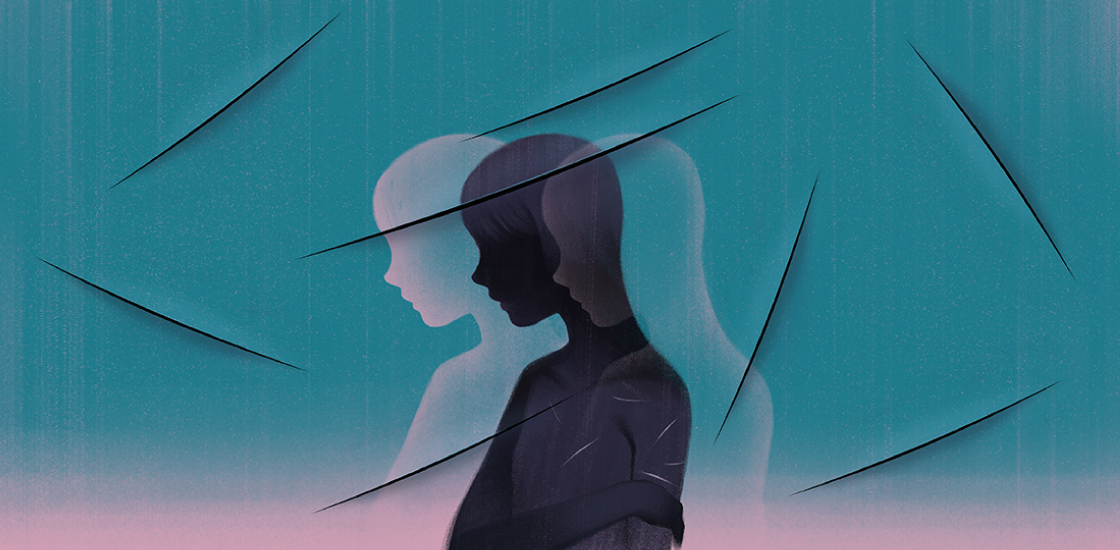Pain, impulsivity may motivate self-harm in autism
People with autism who have painful digestive issues or difficulties inhibiting their impulses are particularly prone to hurting themselves.

People with autism who have painful digestive issues or difficulties inhibiting their own impulses are particularly prone to hurting themselves, a new study suggests1.
Up to half of people with autism hit, bite or scratch themselves. A leading theory dating back to the 1990s suggests that some children subconsciously learn to harm themselves through experience. For example, a child might discover that self-harm is an effective way to get someone to turn off a light or sound that the child finds aversive, or to attract a parent’s attention.
The new study suggests that self-harm is not solely a learned behavior, but is sometimes an unintentional one.
“Maybe the behavior is not fully in their control,” says lead investigator Caroline Richards, clinical psychologist at the University of Birmingham in the United Kingdom. Pain may be one trigger of this involuntary behavior, the study suggests.
The findings also point to strategies for treating and preventing self-injury in children with autism. For example, medications to alleviate pain or training to improve impulse control might help to mitigate self-harm in people with autism.
“This is a condition that’s been very refractory to treatment, and it’s very stressful to families,” says James Bodfish, professor of psychiatry and behavioral sciences at Vanderbilt University in Nashville, Tennessee, who was not involved in the study. “The real excitement here is that this gives us new targets for potential treatment.”
Painful influence:
Richards and her team collected data on self-injury and other behaviors from 208 children and 216 adults with autism. The participants range in age from 6 to 61 years and attend schools or receive services through the National Autistic Society in the U.K.
Caregivers and teachers completed three questionnaires, which assess self-harm, impulsivity, self-restraint, self-care abilities and activity levels. The questionnaires also probe for health problems, such as ear infections, skin conditions, stomach issues and dental problems.
The researchers found that nearly half of the children and adults with autism engage in self-harm. These figures are in line with other estimates published in the past decade2.
Painful skin issues such as eczema, digestive problems such as reflux, and high levels of hyperactivity and impulsive behavior are all associated with self-injury. Statistical analyses confirmed that people who show one of these features are more likely harm themselves than those without the features.
Together, these factors may present a “perfect storm” for self-injury to emerge, says Jill Fodstad, assistant professor of clinical psychology at Indiana University in Indianapolis, who was not involved in the research. “If you have health problems that cause you pain and discomfort, and poor [impulse control], then it makes sense why self-injury would start to occur.”
The findings jibe with those from another study, published 12 February in Autism. That study showed that children with autism who have gastrointestinal problems are nearly twice as likely to have difficulties with their sleep or behavior than others with autism3.
Exercising restraint:
Richards’ study also revealed that more than 40 percent of children and adults with autism engage in ‘self-restraint’ — holding on to themselves, other people or objects. Paradoxically, people with autism who harm themselves are more likely to show self-restraint than others with autism.
These results contradict the leading theory from the 1990s that suggests that people harm themselves in order to get attention. “If that’s the case, you’d never want to or need to inhibit the behavior,” Richards says. Instead, they may be trying to stop themselves from hurting their bodies. The findings suggest that self-harm is not fully under their control, she says.
A limitation of the study is that Fodstad’s team did not measure intelligence. Intellectual disability is a risk factor for self-harm independent of autism, Bodfish says. “One real strength here is that it’s a large study, but the weakness is they could only do so much through a survey,” he says.
The next step, Richards says, is to compare cognitive abilities and impulse control in children with autism who harm themselves.
References:
Recommended reading

Too much or too little brain synchrony may underlie autism subtypes

Developmental delay patterns differ with diagnosis; and more
Explore more from The Transmitter

This paper changed my life: Shane Liddelow on two papers that upended astrocyte research
Dean Buonomano explores the concept of time in neuroscience and physics

